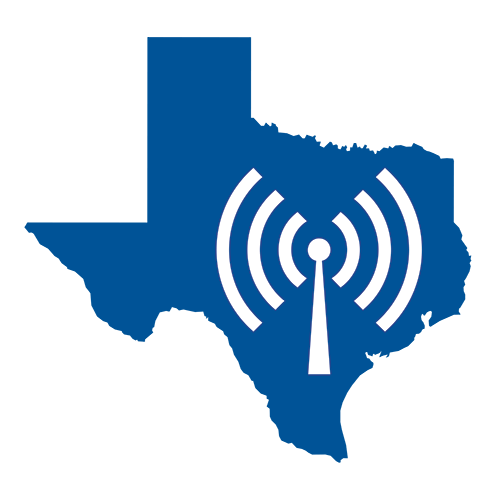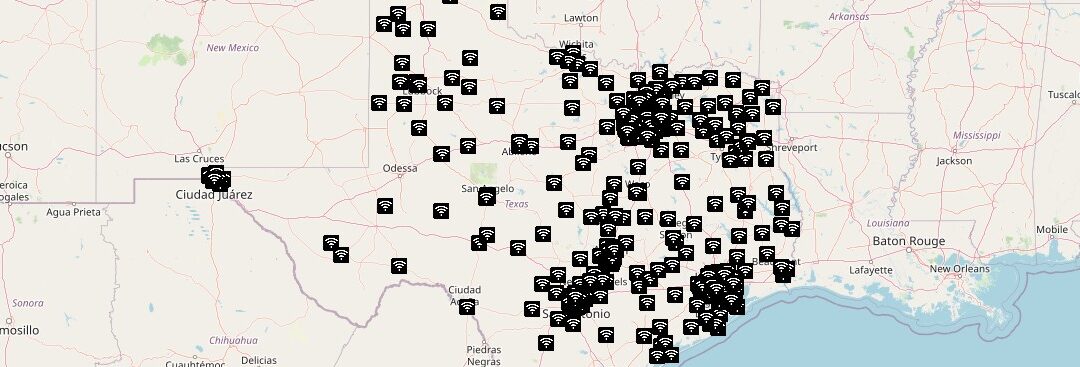The Texas State Library and Archives Commission, with Texas Legal Service Center, Texas Law Help, and Texas RioGrande Legal Aid, recently released a map to help Texans find public, outdoor, drive-up Wi-Fi hotspot locations at libraries throughout Texas. The Texas Free WiFi Map is available in English, Spanish, and Vietnamese and users are able to enter their address and set how far they are willing to drive to find a free Wi-Fi hotspot.
This map is intended to help ameliorate digital divide concerns in Texas, particularly those exacerbated by the COVID-19 pandemic. The results you see on the map are WiFi networks that are accessible outside, while remaining in your car, to encourage social distancing.
When you click on the Wi-Fi icon on the map after entering your address or using the map’s zoom in function, you can see a great deal of useful information about the location you select. Besides address, phone number, and website, the left-hand menu of the map also lists whether the Wi-Fi is available 24/7, any tips for where to park to get the best signal strength, the Wi-Fi name and password, and any other services you can access at that particular library.
The release of this map provides a much-needed resource for those without in-home broadband access, whether due to lack of infrastructure access or high costs that prevent low income households from getting online consistently. Between the COVID-19 pandemic and a devastating hurricane season, Texans desperately need access to the Internet.
In a recent blog post, TIPI Post-Doctoral Researcher Alexis Schrubbe describes how the Homework Gap is impacting Austin residents: in East Austin parents report using the McDonald’s Wi-Fi for their kids to finish online homework assignments. Although places like McDonalds, Starbucks, and Walmart have Wi-Fi networks, these places are not entirely open to the public nor entirely free – there is an expectation to make a purchase in exchange for Internet access. The Internet connection in these commercialized spaces also oftentimes have content filters that can unexpectedly filter out educational content, have time constraints or other use limitations, and occasionally are even provided by the local cable provider and require users to already have an account in order to use the networks – they are not necessarily always free.
In addition to a worldwide pandemic, many Texans also have to contend with a very active hurricane season. Evacuations, power outages, flooding, and destruction to property and infrastructure create even more precarity for those who already cannot rely on stable internet connections. For students, from primary through to post-secondary, virtual learning has been paramount since March, and preparing and responding to hurricanes adds untold stress and uncertainty.
The Texas Free WiFi Map is a key tool that highlights the role of libraries in getting their communities online. As key community anchor institutions, these libraries are offering a free space to use the internet (i.e. no expectation to make a purchase) and oftentimes these spaces are significantly safer than fast food joints and can be relied upon after natural disasters to respond to community needs.
If your educational institution or library offers free, outdoor, publicly accessible WiFi and you would like to be added to The Texas Free WiFI Map, you can fill out the form here.


